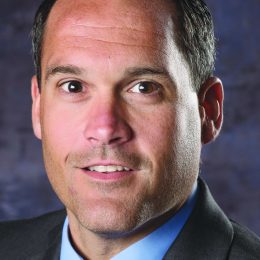
We are just a few months away from our upcoming rate change. The rate change comes as a result of our last cost of service study. The study used actual member data, and our costs are distributed among the classes based on this data.
Our last increase in 2014 included inflation, but much has changed in the last five years. The 2014 rates were built to last three years and we have implemented a more aggressive right-of-way program as well.
The single-phase residential rate will move from $0.097406 to $0.108880 effective April 1. Additionally, we have realigned commercial rate classes, adding a new medium commercial class based on use. We will also offer an optional flat rate for commercial class members.
With regard to rates, our goals are always fairness among member classes, transparency in rate design, and education of our members. To help build understanding around these points, I will answer some common questions.
- Why does the REMC need margins?
Margins are used to provide cash flow, infrastructure improvements, long-term debt principal payments, and capital credit retirements. Without sufficient margins, we would be unable to invest in plant improvements, satisfy our long-term debt obligations, or repay your capital credits. - Why are three-phase users billed a demand charge?
The goal of a demand charge is to recover fixed and variable costs as fairly as possible from small, medium and large three-phase users. Demand charges cover our fixed costs related to providing a certain level of energy to our members. - Energy costs are the variable-cost portion (charged by kWh). Implementing a demand charge is the fairest way to charge a member that requires a higher level of energy than a member that does not require as much (capacity). In other words, you pay depending on what your peak requirement is.
- What is the service availability charge?
This is what it costs the cooperative to provide service to your location, regardless of any electricity used. It covers the fixed costs of providing power. Therefore, even if we do not sell any kWh, there are costs we must cover. Examples include meters and meter installation costs, service drops, billing expenses, other administrative costs, and the customer-based portion of poles, transformers, and wire that all customers must have to provide access to the electric grid (minimum system). - What is a wholesale power cost tracker?
The tracker is a mechanism that follows or “tracks” varying costs that the cooperative incurs in providing service to members. What are these unpredictable costs? Utilities use trackers for various costs including fuel, environmental requirements, and purchased power above estimated levels that are projected for a given period. If costs fall, the tracker declines and can even become negative, resulting in a credit. The tracker amount is multiplied by the kilowatt-hours (kWh) used.
We will continue to provide information about the rate change and I remain committed to transparency through communication. My team and I look forward to collaborating with you to share information, ideas, and keep moving our cooperative forward.
Brett abplanalp
CEO



